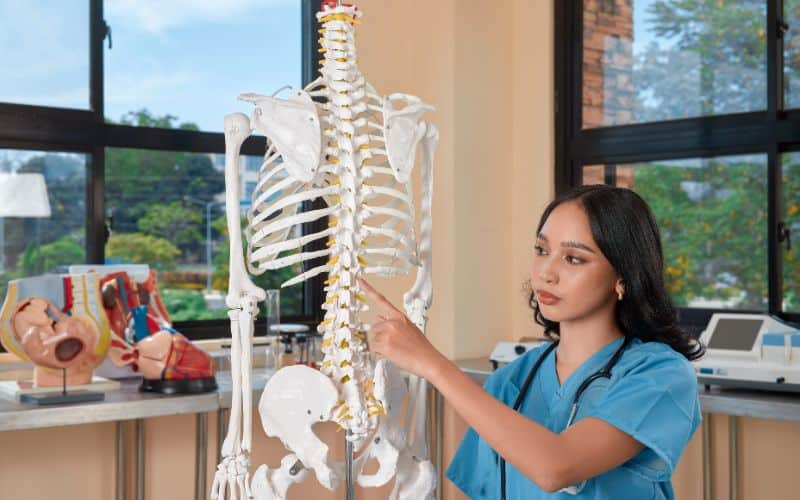
The spine can be complex to self diagnose be in injury, tightness or pain. We put this quick FAQ guide to together with regards to the thoracic spine.
1. What Is the Thoracic Spine and Where Is It Located?
This is the middle part of the spinal column that encompasses the upper back and middle back. The thoracic spine usually starts at the base of the neck and ends at the bottom of the ribs.
2. What Internal Organs Does the Thoracic Spine Protect?
This part of the spine usually protects all the organs that are protected within the rib cage. They include the lungs, heart and liver.
3. What Other Functions Does the Thoracic Spine Play?
Apart from protecting the organs protected within the rib cage, the thoracic spine plays several key roles including:
- Protecting the spinal cord and the nerves that send and receive signals from the brain
- Acting as an attachment area for the ribs
- Helping ensure flexible movement in the upper body
- Providing sufficient support to the chest and abdomen so that you can breathe easily and normally
4. What Are Some of the Constituent Parts of the Thoracic Spine?
The thoracic spine is made up of different parts including:
• 12 vertebrae
• Facet Joints – This is a slippery cartilage located between the vertebrae that allows them to slide against each other as you twist and turn the upper back
• Soft Tissue – This includes ligaments and muscles that hold the vertebrae in position and provide support to the back
• Tendons – This is tissue that usually connects muscles in the upper and middle back to the bone
• Spinal Cord – This is a complex network of nerves that travels through the spinal canal which passes through the thoracic spine
• Nerves – These are receptors that send and receive signals from the brain. Some of the nerves that pass through the thoracic spine include:
– T1 & T2 Nerves – These nerves carry sensory and movement signals from the spinal cord to the arms, hands and shoulders
– T3 &T5 Nerves – These nerves carry sensory signals to the chest, rib cage, diaphragm and they mainly aid in breathing
– T6 &T12 Nerves – These nerves control abdominal and back muscles. They aid in helping proper balance and posture as well as coughing
5. Is Pain in the Thoracic Spine Common?
The thoracic spine is fairly strong and can handle most types of irritations and minor injuries.
However, injuries in one of the constituent parts of the thoracic spine can manifest in the form of pain, irritation and inflammation. If any part of the thoracic spine gets injured or misaligned, the pain can be mild, moderate or chronic depending on the severity and duration of the injury.
6. What Are Some of the Most Common Causes of Pain in the Thoracic Spine?
Some of the leading causes of pain in the thoracic spine (upper and middle back) include:
- Bad posture
- Muscular atrophy
- Chronically lifting heavy items improperly
- Herniated discs
- Chronic straining of muscles in this region
- Arthritis
- Traumatic spine injuries
7. What Are Some of the Best Ways to Avoid Pain in the Thoracic Spine?
To avoid pain and discomfort in the thoracic spine, you can try the following remedies …
• Resting frequently especially if your work involves a lot of twisting and turning in the upper body
• Exercising frequently to make muscles in the area strong
• Following a diet that promotes the formation of strong bones
• Using the proper lifting techniques
• Using the proper posture when seated or standing

As with any back pain or spine related issue, it’s best to consult a specialist. Dr Hamid R. Mir M.D. is a certified orthopedic spine surgeon in Anaheim, CA offering spine surgery in Orange County and across southern California.



